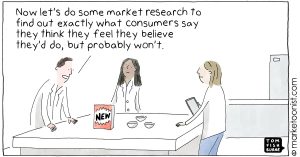This is an episode of Svyatoslav Biryulin’s free newsletter Strategy in Three Minutes. Subscribe for free here.
1. Strategy and Value Exchange: Your value network makes you or breaks you

Managing your value network matters more than increasing quarterly profits.
If you bought a coffee-to-go on your way to the office this morning, you might not have even known that its way to your desk was longer than it seems.
Coffee was once green beans. Paper was a tree.
We can visualize this way as a supply chain. However, the chain reflects the flow of goods but doesn’t represent the flow of value.
Value flows don’t look like chains but like networks.
Every company is linked with many other companies and markets, for instance:
– Your suppliers and distributors
– The labor market and the capital market
– The society you belong to
Its success depends on the quality of these links.
Contemplation questions:
– Which organizations and entities (such as markets) are part of your value network?
– Which ones mean most for your success?
– How can you create more value for them to capture more value from them?
2. Strategy-related terms: One ‘Why’ Beats a Thousand ‘Whats.’ Customer research as a powerful tool

Picture credit: Marketoonist
Market research is like archeology. It helps understand the past but tells us little about the future.
It gives us many ‘whats’ but few ‘whys’.
Of course, market research isn’t useless. But it can only go so far.
Consumer research includes surveys, focus groups, in-depth interviews, ethnographic studies, joint shopping trips, and other methods.
The results are usually used only by marketers, and that’s a mistake.
Oftentimes they use them rather mechanically—for pricing decisions or advertising campaigns.
But I always use consumer research for strategic purposes.
This doesn’t mean we build the strategy based on this data—it’s rare.
But this data becomes an invaluable source of strategic insights.
Especially, and I always recommend this, if the company’s top managers take part in the process.
Using first-order Whys, which we obtain during consumer research (for example, why consumers prefer one product or brand over another), we uncover second-order Whys.
These are precisely what we use for strategy.
By analyzing our conversations with consumers, we understand their needs, fears, dreams, phobias, and biases.
And this is an invaluable treasure trove for strategic insights.
3. Trend of the week: AI – Artificial Intelligence or just an Ambitious Idea?
The technological revolution is temporarily postponed.
Elon Musk demonstrated Tesla Inc.’s highly anticipated self-driving taxi at a flashy event on Thursday, October 10. Spectators were also impressed by Optimus Bots, Tesla’s humanoid robots.
On Monday, October 14, Bloomberg reported that Optimus bots were remotely operated by humans.
If it seems like you’re witnessing a miracle, it probably just seems that way.
This wasn’t the first time supposedly magical technology hid invisible operators doing all the work.
In April, Business Insider reported: “Amazon’s Just Walk Out technology had a secret ingredient: Roughly 1,000 workers in India who review what you pick up, set down, and walk out of its stores with.”
The control over purchases in those Amazon stores, where you don’t need to check out at the registers, wasn’t done by sophisticated software but by real people watching the screens.
The Tesla Robotaxi presentation disappointed everyone because it wasn’t a demonstration of new technology but rather a visualization of Elon Musk’s dreams, who, it seems, has lost interest in cars.
AI hasn’t eaten the world, eliminated millions of jobs, or improved our lives.
Progress is inevitable. Driverless taxis, home assistant robots, and truly smart AI will become part of our lives, just later than many predicted.
This means you shouldn’t chase every hype but instead calmly develop a strategy and follow it step by step.
Some gifts for you
Second, until November 10th, you can upgrade to a paid subscription to my main newsletter Strategic Seeing with a 20% discount. Here’s the link. It won’t solve my financial tasks, but it will support me in another way—Substack promotes newsletters with paid subscribers. Support my work! Thank you in advance.
Plus, the first three people to subscribe to the monthly plan will get a free book and a one-hour Zoom session with me. The first person to subscribe to the annual plan will get a free book and three one-hour Zoom sessions with me.
But that’s not all! I can become a strategic advisor for one company pro bono for six months. To learn more, send me a direct message here, and I’ll share the details.
Svyatoslav Biryulin
––
Read also: No-Strategy Approach: Embrace Layered Strategic Thinking Instead
Check out my new book, Red and Yellow Strategies: Flip Your Strategic Thinking and Overcome Short-termism, here.
Subscribe to my newsletter.
Follow me on LinkedIn.
Do you have a comprehensive, working, and winning strategy? Find out by taking the most comprehensive strategy test, the Ultimate Strategy Checklist by Svyatoslav Biryulin. This checklist consists of 25 key questions and numerous additional ones. If you don’t have an answer to at least one of them, it might be worth refining your strategy. To get it for free, just subscribe to Svyatoslav’s free newsletter here. You will receive the link in the welcome email.


